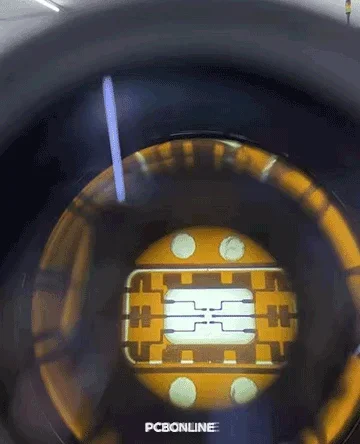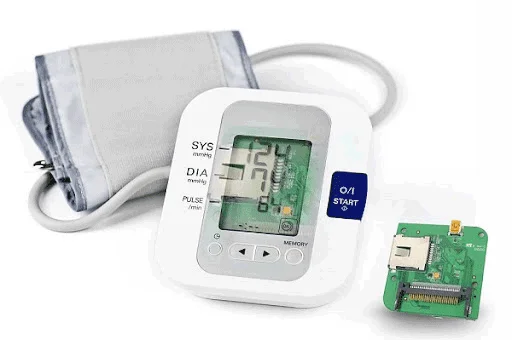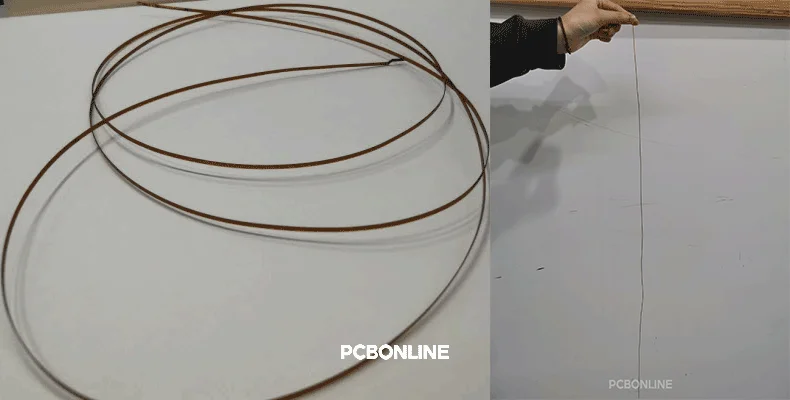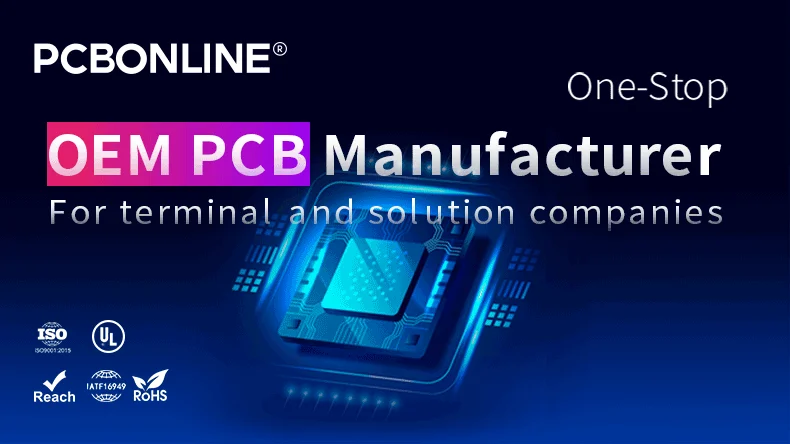
If you are purchasing printed circuit boards (PCBs) and assembly for medical devices, a question you concern is what electronic requirements the PCBs of medical devices should meet. PCBONLINE, an OEM PCB manufacturer for medical, automotive, and aerospace electronics, is here to answer your question as a medical PCBA manufacturer.
In this article:
Electronic Requirements for Medical Devices IPC-A-600 Class 3 + IPC-6012 Class 3 for Medical Devices PCB Assembly Tests for Medical Devices Printed Circuit Boards for Medical Devices Partner with PCBONLINE for Medical PCBs and AssemblyElectronic Requirements for Medical Devices
Medical electronic assemblies must deliver the highest level of reliability and safety because device failure could directly impact patient health or life support functions. Therefore, the electronic and PCB manufacturing processes for medical devices are governed by multiple international standards and quality assurance requirements.
1. Quality management and regulatory compliance
Medical electronics manufacturers must operate under a certified quality management system compliant with ISO 13485, the global standard specific to medical devices. This ensures that every stage, from design and procurement to manufacturing and traceability, meets regulatory expectations.
Additional electronics requirement certifications for medical devices include:
- ISO 9001 – General quality management foundation.
- ISO 14001 – Environmental management compliance.
- RoHS / REACH – Hazardous substance and chemical safety compliance.
- UL recognition – Flammability and safety validation for PCB materials.
- FDA 21 CFR Part 820 / EU MDR – Regulatory frameworks for U.S. and EU markets.
2. Design and material control
We use high-reliability materials such as high-TG FR-4 or polyimide laminates with low CTE (Coefficient of Thermal Expansion) to produce medical device PCBs.
Surface finishes like ENIG or ENEPIG are preferred for their flatness and oxidation resistance.
Besides, we maintain material certificates (CoC) and batch traceability throughout the supply chain.
3. Process and reliability requirements
To ensure long-term stability, medical-grade PCBs and assemblies undergo rigorous reliability validation:
- Thermal cycling and humidity testing
- Solder joint reliability and micro-section analysis
- Ionic contamination and cleanliness testing (ROSE or ion chromatography)
- Electrical testing (100% continuity and isolation)
- AOI, X-ray, and functional verification for high-density PCBs
4. Traceability and documentation
Each PCB must be fully traceable to its raw materials, production lot, and test data. Documentation such as the Device History Record (DHR) and Certificate of Conformance (CoC) must accompany every batch, ensuring transparency, accountability, and regulatory compliance.
IPC-A-600 Class 3 + IPC-6012 Class 3 for Medical Devices
IPC-A-600 Class 3 and IPC-6012 Class 3 are both required for medical printed circuit boards. They complement each other to ensure performance and consistency at both the manufacturing and inspection levels.
IPC-6012 Class 3 guarantees manufacturing integrity.
IPC-A-600 Class 3 ensures inspection and acceptance consistency.
|
Standard
|
Purpose
|
Role in medical PCB quality
|
|
IPC-6012 Class 3
|
Defines manufacturing performance requirements for high-reliability rigid PCBs.
|
Ensures the PCB is built with controlled materials, plating thickness, hole integrity, dielectric performance, and thermal reliability suitable for life-critical applications.
|
|
IPC-A-600 Class 3
|
Specifies acceptance criteria and visual inspection requirements for finished PCBs.
|
Provides the visual and structural acceptance standards for defects such as voids, delamination, inner-layer misregistration, and conductor spacing. Used for incoming and final inspection.
|
Recommended IPC standard stack for medical electronics:
- PCB manufacturing standard: IPC-6012 Class 3
- Medical PCB acceptance standard: IPC-A-600 Class 3
- Medical PCB assembly acceptance standard: IPC-A-610 Class 3
- Soldering processes standard: J-STD-001 Class 3

When combined with ISO 13485 quality management and full traceability documentation, these IPC Class 3 standards form the foundation of a compliant, high-reliability manufacturing process for medical electronic devices.
PCB Assembly Tests for Medical Devices
Testing is a critical stage in medical electronics manufacturing, ensuring that every medical PCB functions reliably and consistently. While standard inspection methods, such as AOI (Automated Optical Inspection), X-ray inspection, and functional testing, are essential for all high-quality electronic assemblies, medical devices require an additional layer of precision and reliability verification.
1. Standard inspection and functional tests
This rack-mounted ATS, a main PCBA (Printed Circuit Board Assembly), integrates these functional sections:
- AOI (automated optical inspection): Detects missing or misaligned components, solder bridges, and polarity errors after SMT placement.
- X-ray inspection: Used to verify hidden solder joints, such as BGAs, QFNs, and bottom-terminated components, ensuring proper wetting and void ratio.
- In-circuit and functional testing: Validates the electrical performance and firmware operation of the assembled PCB before system integration.
2. Advanced reliability and precision testing for medical devices
Medical electronic products, particularly life-support, implantable, and diagnostic systems, must demonstrate exceptional measurement accuracy and long-term reliability. Therefore, beyond standard inspections, additional precision tests are mandatory:
Four-terminal sensing test (4-wire kelvin test):
Four-terminal sensing eliminates the effect of lead and contact resistance when measuring very low resistances. It provides extremely accurate readings for micro-ohm-level joints, vias, and interconnections.
The 4-wire Kevin test is essential for:
- Verifying the integrity of fine-pitch solder joints and critical grounding paths.
- Ensuring stable electrical performance under low-resistance conditions.
- Detecting micro-resistance variations that could indicate solder fatigue, partial cracks, or process inconsistencies.
The four-terminal sensing test is mandatory in medical, aerospace, automotive, and military-grade electronics, where even small deviations in electrical resistance could lead to performance drift or system failure.
There is no need for large electromagnetic contactors or power transformers. So the compact design is achievable and efficient in both space and heat management.
High-reliability stress testing: Includes thermal cycling, high-humidity bias, vibration, and aging simulations to verify long-term mechanical and electrical durability.
Ionic contamination and cleanliness testing (ROSE or ion chromatography): Ensures that post-solder flux residues or contaminants remain below defined thresholds, preventing electrochemical migration and leakage currents.
3. Traceability and Documentation
We record all test data, from AOI images to four-terminal measurement results, and link them to the medical PCB’s serial or batch number. This traceability ensures full visibility of quality control processes, enabling compliance with ISO 13485 and FDA requirements.
Printed Circuit Boards for Medical Devices

flexible medical PCB for gastroscopy manufactured by PCBONLINE
In modern medical electronics, flexible PCBs dominate in wearable, implantable, and compact diagnostic devices, while rigid PCBs are mainly used in larger equipment for signal processing and power management.
Flexible PCBs (FPCs) and rigid-flex PCBs have become essential due to their lightweight, bendable, and compact characteristics. These medical PCBs enable complex medical systems to fit into compact and twisted spaces and conform to curved or moving surfaces, including areas that contact or even enter the human body.
Why are flexible PCBs widely used in medical electronics?
Flexible circuits provide several advantages that make them ideal for medical applications:
- Miniaturization and weight reduction: Medical implants and wearable devices must be lightweight and compact. FPCs allow for tight bending radii and multilayer interconnections within limited volumes.
- Conformability and integration: Flexible PCBs can be shaped to fit anatomical structures or wrapped around instruments. This is particularly useful in catheters, endoscopes, and biosensors that need to conform to body contours.
- High reliability under dynamic stress: Unlike rigid boards, FPCs can withstand repeated bending and vibration, maintaining electrical continuity in applications such as implantable pulse generators, hearing aids, or portable monitoring systems.
- Simplified interconnection: Flex circuits reduce the need for connectors and cables, improving signal integrity and eliminating potential points of failure — a key factor in life-critical devices.
What are the typical medical applications of flexible and rigid-flex PCBs? See the table below.
|
Device type
|
Application example
|
PCB type
|
|
Implantable devices
|
Pacemakers, defibrillators, neurostimulators
|
Flexible or rigid-flex PCB
|
|
Diagnostic equipment
|
Catheters, ultrasound probes, endoscopes
|
Flexible PCB
|
|
Wearable medical devices
|
Heart rate monitors, smart patches, glucose sensors
|
Flexible PCB
|
|
Surgical tools
|
Minimally invasive robotic instruments
|
Rigid-flex PCB
|
|
Hearing aids and optical devices
|
Cochlear implants, medical imaging optics
|
Flexible PCB
|
What are the Medical PCB manufacturing and material requirements?
Medical PCB design and manufacturing follow IPC-6013 Class 3 and ISO 13485 standards to meet the extreme reliability demands of medical and implantable applications.
How about the key components of a server automatic transfer switch? The components in its various function zones are below.
- Base material: Polyimide (PI) is preferred for its heat resistance, mechanical stability, and biocompatibility.
- Copper foil type: Rolled Annealed (RA) copper is used for superior flexibility and fatigue resistance.
- Surface finish: ENIG, ENEPIG, or OSP, depending on the assembly method.
- Cleanliness: Strict ionic contamination and surface residue limits are required to prevent leakage or corrosion in sensitive circuits.
- Sterilization compatibility: FPCs must withstand sterilization processes such as EtO gas or gamma radiation without material degradation.
Partner with PCBONLINE for Medical PCBs and Assemblies
Since our foundation in 2005, PCBONLINE has been committed to turnkey medical PCB assembly from PCB prototypes to mass assemblies.
Our turnkey medical PCBA services offer:
- Turnkey PCBA manufacturing: From PCB prototypes and testing to mass PCBA and box-build assembly, our PCB assembly services are custom and one-stop.
- Complete procurement: We source and customize enclosures, cables, and accessories from reliable suppliers.
- Engineering support: We check enclosure and accessory designs for compatibility with your PCBA and can suggest design changes.
- Free DFM/DFT: We provide free Design for Manufacturability (DFM) and Design for Testability (DFT) checks to ensure that designs are optimized for a smooth production process.
- Quality assurance: IPC-A-610 Class 3 + IPC-6012 Class 3, medical-grade inspection standards.
- Turnkey delivery: From PCB fabrication to final product packaging and shipping.

PCBONLINE manufactures, assembles, and tests PCBs and PCBAs to box builds as a source factory manufacturer under one roof, from prototypes to bulky production, saving costs and time for you.
We have powerful manufacturing strength for advanced PCBs and high-end assemblies, such as flexible PCBs, rigid-flex PCBs, HDI PCBs, high-frequency PCBs, ceramic PCBs, waterproof sealing, and 01005 fine-pitch assembly.
We can precisely control reflow/wave oven temperatures, design PCBA fixtures, and help create user manuals, installation guides, and compliance labels.
Our high-quality PCBA contract manufacturing is certified with ISO 13485, ISO 9001:2015, ISO 14001:2015, IATF 16949:2016, RoHS, REACH, UL, IPC-6012 Class 3, and IPC-A-610 Class 3.
Our one-on-one free and professional DFM helps you debug and improve design, to ensure the manufacturability, cost-effectiveness, and final device success.
Whether you need turnkey medical PCB assembly for diagnostic equipment, wearable medical devices, hearing aids, or optical devices, we can deliver the PCBAs of high quality and in time, meeting any of your project requirements. To get a quote for your PCBA project, email us at info@pcbonline.com.
Conclusion
The electronic requirements of PCB manufacturing and assembly meet ISO 13485, IPC-6012 Class, and IPC-A-610 Class 3 acceptance standards. With more than 20 years of electronic manufacturing experience in turnkey medical PCBA, we are ready to check your Gerber and provide turnkey services for your medical devices. Contact PCBONLINE today!
PCB assembly at PCBONLINE.pdf




